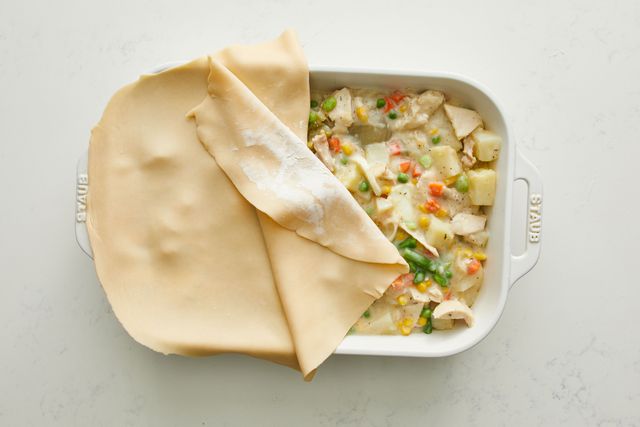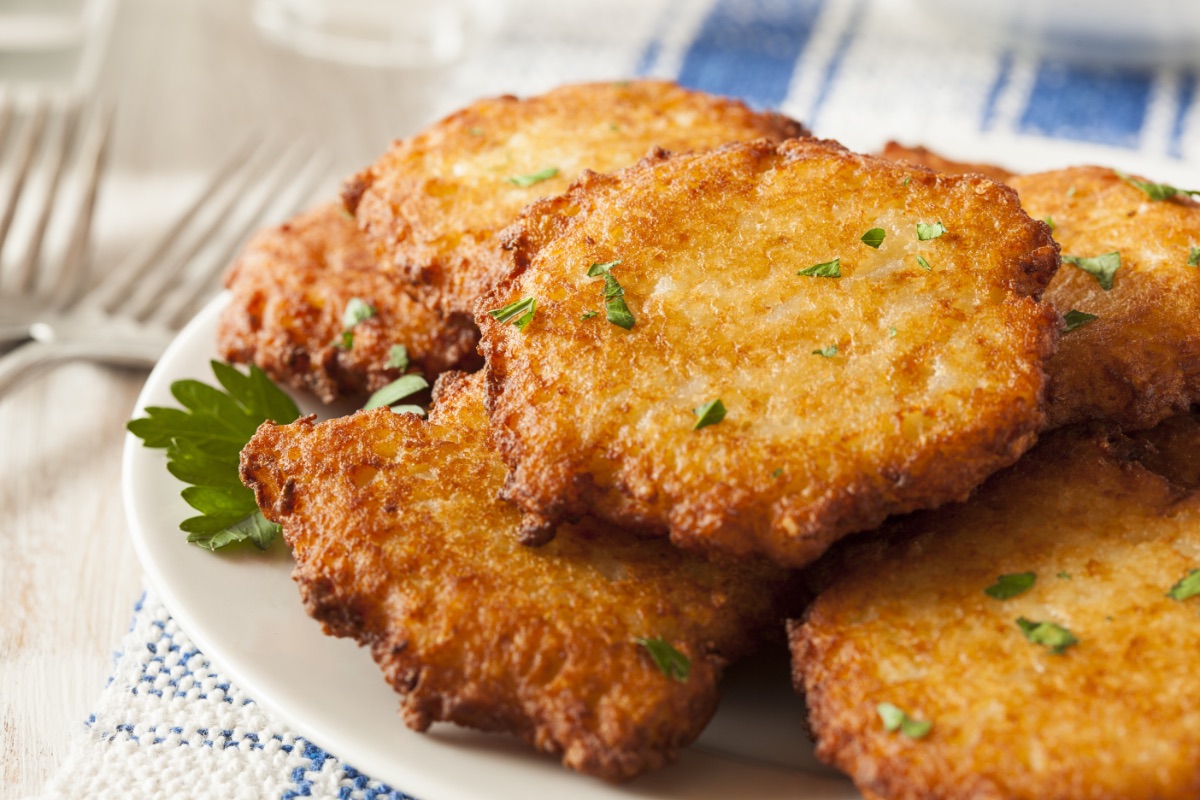A cozy, comforting dish ideal for chilly days and blustery nights, pot pie – whether filled with chicken, turkey, beef, or all vegetables – offers an excellent opportunity for home cooks to use up leftover meat and produce with hearty and flavorful results.
Every pot pie maker uses their own recipes and techniques in the hopes of achieving the perfect balance of flaky crust and rich filling, but a few common mistakes can easily derail your pot pie ambitions.
We asked professional chefs and recipe developers to point out the biggest mistakes that cooks (pros and amateurs alike) make when prepping pot pies, along with the best ways to fix (or outright avoid) these problems.
Mistake #1: Using the wrong fat in your crust batter
Because pot pie is, in fact, a pie, a flaky crust should be a top priority. According to owner and chef Maxcel Hardy of COOP and Jed’s, the top culprit for a less-than-flaky pie crust is “using the wrong fats. Lard is always going to be the best to use to give you the best taste, and it creates the flakiest crust for your pot pie.”
If you don't have lard or don't want to use it, make sure your butter is extremely cold. Warm butter won't give you the same flaky layering as cold pieces of butter will. To get it properly chilled, put cubed butter in the freezer for a few minutes before you blend with flour.
Mistake #2: Overworking the crust dough
“I see lots of people overworking the dough,” says Sara Bradley, chef/owner of Paducah, Kentucky's Freight House. With traditional pie crust, overworking results in a tough texture rather than the light and flaky consistency you want.
If you’re instead going for a “biscuit topping, you want to make sure [not to] knead the biscuits too much. This causes gluten to develop and will cause your topping to not rise properly and be more like rocks than [like] fluffy biscuits,” Bradley tells us.
And if you choose the widely-used pot pie shortcut of swapping homemade pie crust out for store-bought puff pastry, “There’s no need to roll the dough out all the way. [In doing so,] you are just smushing the layers and you won't get as much ‘puff’ or flake as [you should],” says Bradley.
Mistake #3: Failing to pre-bake the bottom crust
Some pot pie makers choose to ditch the bottom crust and only use a top crust (or a non-crust topping like biscuits). But for a classic pot pie, both a top and bottom crust need to be present.
Pot pie filling tends to include a solid amount of liquid, which is why executive chef Brian Jupiter of Frontier and Ina Mae Tavern urges you to "pre-bake the bottom crust. [If you don’t,] the bottom gets soggy and not crisp. Simply par-bake the crust with baking weights, such as dry beans, so that it does not puff up. Once your bottom crust is 75 percent baked, remove it from the oven, take the weights out, add your filling, and then add the top crust. Make sure to pinch the two crusts together as much as possible to prevent the gravy interior from leaking.”
Mistake #4: Burning the crust
In an attempt to ensure that the filling of a pot pie cooks all the way through, some well-intentioned pie makers crank up the oven temperature and wind up with a burnt pie crust.
Owner and recipe developer Jessica Randhawa of The Forked Spoon says that the best way to keep your pot pie crust from burning is to "use a pie shield. If you have one available, cover your pot pie with a pie shield if it starts browning too soon. If you do not own a pie shield, make your own by cutting a 4-inch circle in the center of a square of aluminum foil. Place it loosely over the pie.”
Mistake #5: Using uncooked vegetables for filling
Pot pie filling needs to include vegetables (whether on their own or with meat), but chopping a bunch of raw veggies and throwing them right into the pie filling won’t yield appealing results.
Popular pot pie vegetables like carrots, celery, and potatoes "take a long time to properly cook. Instead of adding them raw, they should be softened by either roasting or braising in chicken or vegetable stock until they are somewhere between al dente and tender. Both methods of par cooking the vegetables will add additional flavor to your pot pie,” explains cookbook author and recipe developer Paul Sidoriak.
Stacy K. Allen, Food Stylist: Torie Cox, Prop Stylist: Shell Royster
Mistake #6: Overfilling the pie
The abundance of pot pie is essential to its charms; no one wants to cut into a flat pie with meager fillings. However, for best results, a touch of pie-filling restraint is necessary.
"Another common mistake is using too much filling. Not only does this make the pot pie difficult to eat, but it can also cause the crust to spill over or even burst. When adding the filling, be sure to leave enough room so that the pie can be properly sealed," suggests recipe developer Dee Broughton of Scratch Market.
Mistake #7: The filling is too thick (or too runny)
"The consistency of [pot pie] filling is important because [you don't want it to] be either too runny or too thick," says chef-instructor Stephen Chavez of the Institute of Culinary Education. If you’re wondering what constitutes the perfect texture for pot pie filling, Chavez has a handy breakdown for you: “For example, a can of condensed cream soup is too thick, but if you add a full can of water to that soup, then it is too thin. The ideal texture is about the same consistency as if you added half of the liquid to that can of condensed soup. It should flow, but not be soupy.”
Chavez’s formula for getting a silky, just-liquid-enough gravy is based on a celebrated French "mother sauce" known as velouté.
“It consists of a roux (equal parts flour and fat by weight) and a ‘white stock,’ which includes chicken and vegetable stock or broth. I cook the vegetables and meat separately in a bit of oil and butter until they are tender. In a separate pot, I make the velouté. Once they are both done, I fold the two together. This way, neither the vegetables nor the sauce are over cooked. This mix can then be cooled until you are ready to fill the pies."
This article was written by Taylor Tobin from Southern Living and was legally licensed through the DiveMarketplace by Industry Dive. Please direct all licensing questions to legal@industrydive.com.









